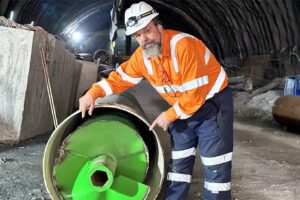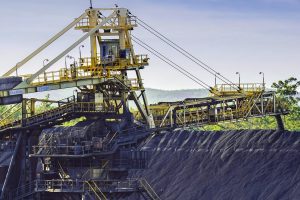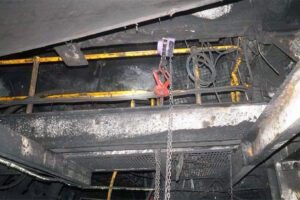There can be no doubt that protecting the safety and health of our mine workers is of paramount importance. In Queensland, that vital role is undertaken by Simtars – the Safety in Mines Testing and Research Station.
Established in 1983 by the Queensland Government following the tragedies of the Box Flat Colliery and Kianga No 1 Colliery underground mine explosions, Simtars has grown to become a world-leading centre for mining safety and health.
Simtars supports the responsible use of Queensland’s mineral and energy resources and believes mine accidents, disasters and occupational disease are preventable.
That is why Simtars provides research, testing, engineering, scientific and training services that enhance industry safety and health outcomes.
Purpose-built analytical and research facilities opened in 1988 at Redbank, near Ipswich, were complemented by an office and laboratory that opened in 1997 in Mackay to serve the Central Queensland region.
Simtars boasts an emergency response capability comprising of a mobile gas laboratory and gas chromatographs that can quickly deploy as needed.
This capability is maintained by having personnel on call 24 hours per day, 365 days per year.
The state-of-the-art Simtars mobile laboratory features sophisticated equipment, including a 20-point tube bundle system and a gas chromatograph with all necessary carrier and calibration gases, to assist in the gathering of data required to manage the response to an emergency situation.
That technical capability is supported by gas chemists who run the gas chromatographs, produce trends and interpret data; mining engineers experienced in underground coal mining techniques, can provide scientific and technical support to the incident management team.
The Simtars emergency response team has extensive experience supporting Queensland Mines Inspectorate investigations having formed part of the emergency response to the Moura No. 4 mine disaster in 1986, Moura No. 2 mine explosion in 1994 and New Zealand’s Pike River mine disaster in 2010.
Simtars was the first to offer international assistance at Pike River with up to 20 personnel deployed on a rostered basis in the months after the disaster occurred.
Simtars provided expert advice to the Incident Management Team (IMT), the police and other officials and performed risk assessments and other studies such as a heat survey of the auxiliary vent shaft, modelling of flammable gas plumes and analysis of blast pressures.
The team also supplied gas chromatographs, other monitoring equipment and deployed technical experts to perform the gas analysis and provide technical mining advice.
Following the Moura disasters, Simtars performed analysis of samples and gas interpretation from the onsite gas chromatograph and tube bundle system and with Simtars mobile gas analysis equipment.
Simtars personnel also provided advice to the IMT during the response.
Simtars also provides mines with 24 hour gas monitoring support through its proprietary Safegas/CAMGAS software and interpretation of those results.
The automated Safegas software system is designed to monitor and alarm at specified points on the data from tube bundle and real time telemetric systems, which alerts the mine site operators of changes in gas concentrations and allows them to act before hazardous conditions occur. All operator actions are recorded in the database.
The CAMGAS, or Computer Assisted Mine Gas Analysis System, allows mine site operators to use gas chromatographs – work that would normally be the domain of experienced gas chemists.
Both of the systems use the Simtars software, Segas Professional, for trending an interpretation of the results.
Although accident prevention is top of mind for the mining industry, preparing for accidents and being able to respond appropriately has a sharp focus for Simtars.
That is why each year Simtars plans and coordinates the Queensland Level 1 Emergency Exercise.
The Level 1 Emergency Exercise was a recommendation from the Queensland Mining Warden’s inquiry into the explosion at the Moura No. 2.
The objectives of the exercises include testing the Mines Emergency response system; testing the self-escape/aided escape and inseam response as required;
testing the ability of external services, including the Queensland Mine Rescue Service, Industry Safety and Health Representatives, Simtars, Police and the Ambulance service to administer assistance; testing the Mines Emergency response system; and providing a focal point for emergency preparedness in Queensland.
Learnings from Level 1 exercises have led to a wider adoption of the use of compressed air-breathing apparatus and the recognition that regular training increases the successful donning and change-over of self-rescuers.
During Level 1 exercises, coal mine workers are often provided an opportunity to experience self-escape using breathing apparatus, including the wearing of real self-contained self-rescuers which they may not have previously experienced.
Each exercise requires the formation of an incident management team and early exercises recognised that the incident management teams were ineffective.
Identifying that deficiency led to the development of the Queensland Mines Rescue Service Mine Emergency Management System, MEMS – a system based on the Incident Control System used by Queensland emergency services.
The Simtars team also uses learnings from the exercises to improve future exercise simulations to make them as realistic as possible.
The information obtained from exercises is also fed back into software upgrades and training packages delivered to industry.
The 2017 Level 1 exercise, to be run at Broadmeadow mine near Moranbah, will be the 20th such exercise run in Queensland.
Copies of all Queensland Level 1 Emergency Exercise reports are available on the Department of Natural Resources and Mines web site: https://publications.qld.gov.au/dataset/queensland-level-1-mine-emergency-exercise-reports
The never ending quest to improve safety means Simtars is keen to embrace new technology.
For example, Simtars has recently conducted research on navigational-aid technology for vehicles to enable movement in low visibility conditions from high smoke and dust.
Working with staff from the CSIRO, the Simtars Research Team carried out successful underground trials of the Mine Escape Vehicle (MEV) at the Centennial Newstan mine in New South Wales during March, 2017.
Surface and underground mine trials were conducted in controlled smoke and dust conditions to refine the technology options.
This exciting and challenging project stage included research and development into diesel engines to identify the operational characteristics in high methane as well as low oxygen atmospheres; retrofitting existing mine vehicles for rescue; development of technology to enable ‘self-rescue’ – a cost effective guidance system for retrofit to a drift runner; and research and development into navigational aid technology to enable a mine vehicle to be driven in low, or zero, visibility caused by dust or smoke.
The MEV project began in 2002 in response to the Moura No 2 mine disaster in 1994 as part of the Task Group 4 Recommendation 10 for a mine reconnaissance vehicle.
This technology has potential applications for mine escape, mine reconnaissance vehicles and emergency response vehicles.
The successful trial of the MEV means Simtars is now working closely with the MEV industrial steering committee to commercialise the prototype for introduction into Queensland coal mines.
Further information about Simtars, including video of the MEV trial is available online at https://www.dnrm.qld.gov.au/simtars
READ RELATED STORIES














Add Comment